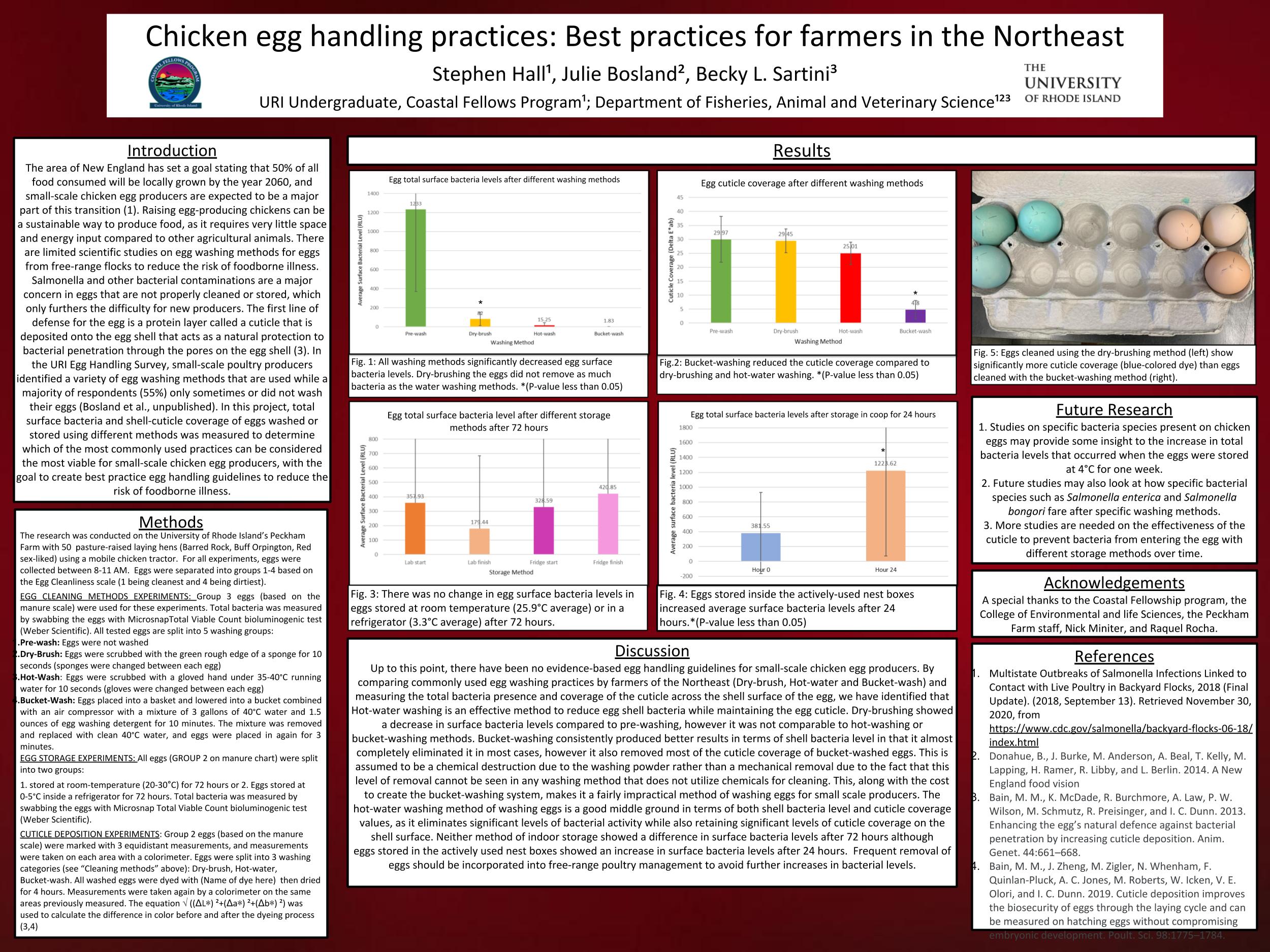Chicken egg handling practices: Best practices for farmers in the Northeast
Abstract:
New England has set a goal stating that 50% of all food consumed will be locally grown by the year 2060, and small-scale chicken egg producers are expected to be a major part of this transition. However, there are limited scientific studies on egg washing methods for eggs from free-range flocks to reduce the risk of foodborne illness. In this study, the total surface bacteria and shell-cuticle coverage of eggs washed or stored using the most common egg handling methods identified from the URI Egg Handling survey (2019) was measured to determine which methods are most viable for small-scale chicken egg producers. The hot-water egg washing method reduced shell bacteria levels while maintaining the egg cuticle compared to the dry brushing and bucket washing methods. There were no significant changes in bacteria levels after eggs were stored for 72 hours at room temperature or in a refrigerator. Eggs stored in the actively used nest boxes for 24 hours showed an increase in surface bacteria levels, meaning prompt removal of eggs after being laid is important to keep bacterial levels low. Future experiments should look at specific strains of bacteria on the surface of collected eggs, as well as the effectiveness of the cuticle at preventing bacterial contamination.
 Home
Home Browse
Browse Close
Close Events
Events Maps
Maps Email
Email Brightspace
Brightspace eCampus
eCampus




